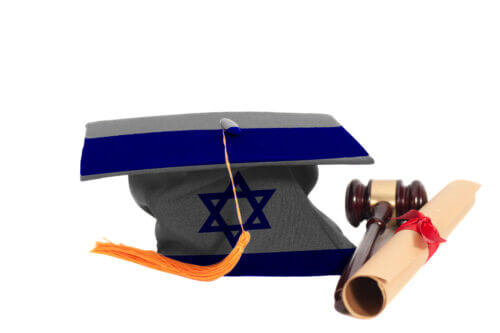Today (Sunday) begins the academic year at universities and colleges in Israel. This time all classes are held on Zoom. The Central Bureau of Statistics publishes the data for this extraordinary year

In the academic year 2019/20 there was an increase in the number of students compared to the previous year. The increase in the number of new undergraduate students was in both universities and academic colleges, but not in the academic colleges of education. This is according to a report published by the Central Bureau of Statistics in preparation for the opening of the academic school year that begins today.
The increase in the number of new students was in almost all fields of study, especially in the fields of: law, mathematics, statistics and computer science; The biological sciences and agriculture. A decrease was recorded mainly in the field of languages, literatures and regional studies. The year XNUMX was the first year in which PhD students began studying at a non-budgeted academic college.
Selection of data:
- In the year 2019/20 (60/XNUMX) there were XNUMX higher education institutions, in which they studied towards a degree or an academic certificate 327.3 thousand students (Including 48.8 thousand students who studied at the Open University[1]).
- Among the total 39-18 year olds, the chance of women studying for a bachelor's degree is XNUMX Was 1.5 times compared to the men's chance. The ratio was similar among Jews and Arab Christians (1.4 and 1.5, respectively). Among Muslims and Druze the ratio was higher (2.4 and 2.1, respectively), and among Ethiopians and Bedouins it was even higher (2.6 and 3.3, respectively).
- Among the Jews and the others, significant differences were found between the socio-economic clusters of the residential localities: the higher the cluster, the higher the learning rate.
- The number of new undergraduate students[2] increased by about 2,500, an increase of 4.6% compared to the previous year. In the universities there was an increase of 7.6% and in the academic colleges - an increase of 4.2% (5.2% in the budgeted colleges). In the academic colleges of education, on the other hand, there was a decrease of 1.5%.
- compared to the previous year, The number of all undergraduate students increased by 1.7%, especially in the non-budgeted academic colleges (4.4%). Also in universities Their number increased (2.5%), while in the academic colleges of education there was a decrease (4.7%). the number of students for the second degree All in all, nothing has changed. Increases were especially in the budgeted academic colleges (6.7%). In contrast, in the non-budgeted academic colleges their number decreased by 8.4%.
- The number of all university students increased by 1.8%. In the first and second degrees, their number increased by 2.5% and 1.2%, respectively, while the number of third degree students decreased slightly by 0.2%.
- Compared to the previous year, there were decreases in the number of students studying for a bachelor's degree in all fields of the humanities and especially in the general humanities (5.4%). The number of students in the field of mathematics, statistics and computer science increased especially (12.8%).
- In 57, about 68% of the new bachelor's degree students studied social sciences or humanities. About 37.9% of all master's degree students studied social sciences or humanities (30.2% and 26.4%, respectively). The PhD students mainly studied biological sciences and agriculture (24.0%) and humanities (XNUMX%).
- women There were a majority (59.7%) in all degrees. The percentage of women among the Arabs was particularly high (68.7%) - twice the percentage of men, meaning that for every Arab student there were two Arab female students. Even among the ultra-Orthodox, the percentage of women was relatively high (67.4%).
- Between the years 2009 (10/XNUMX) and XNUMX, a percentage increased The Arab students Significantly in all degrees: in the first degree - from 13.1% to 19.2%, in the second degree - from 7.4% to 14.6% and in the third degree - from 5.2% to 7.2%, respectively.
- In 13.1, XNUMX thousand studied in higher education institutions ultra-orthodox students (Alumni of ultra-Orthodox educational institutions). They studied mainly subjects from the field of education and teaching training (31.6%).
- This year, some of the students from settlements in theSocio-economic clusters High (clusters 10-8) was 25.2% with a bachelor's degree, 31.8% with a master's degree and 38.5% with a third degree. The relative share of students from communities in low socio-economic clusters (clusters 3-1) was 26.3% in the first degree, 22.1% in the second degree and 15.6% in the third degree.
[1] Including 3,477 students who were in the status of thesis writers, for explanations about the Open University see the definitions and explanations chapter below.
[2] A new undergraduate student is a student who is studying for the first time in the higher education system and who did not appear in the administrative information from previous years.
